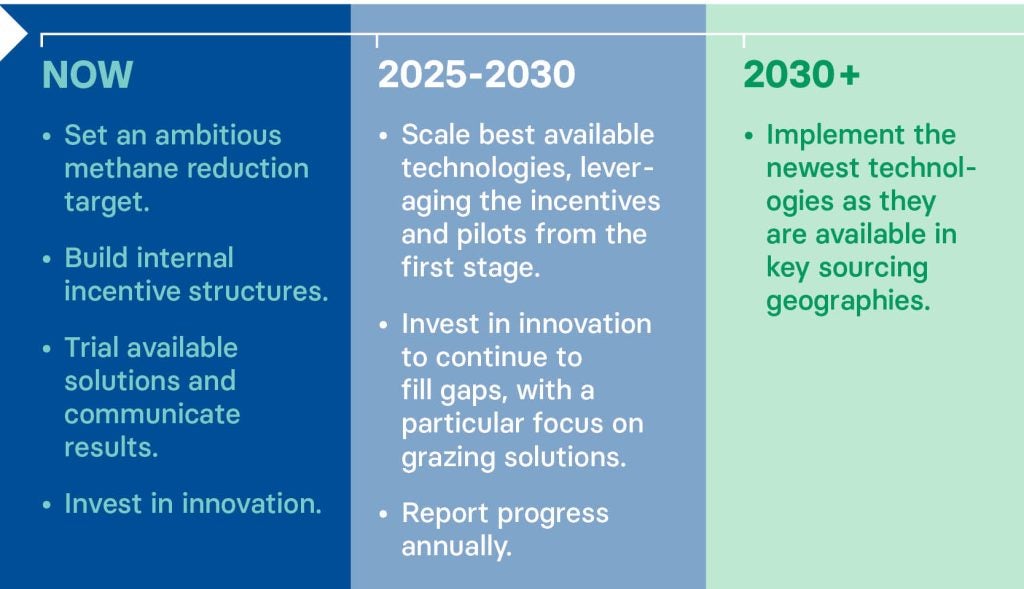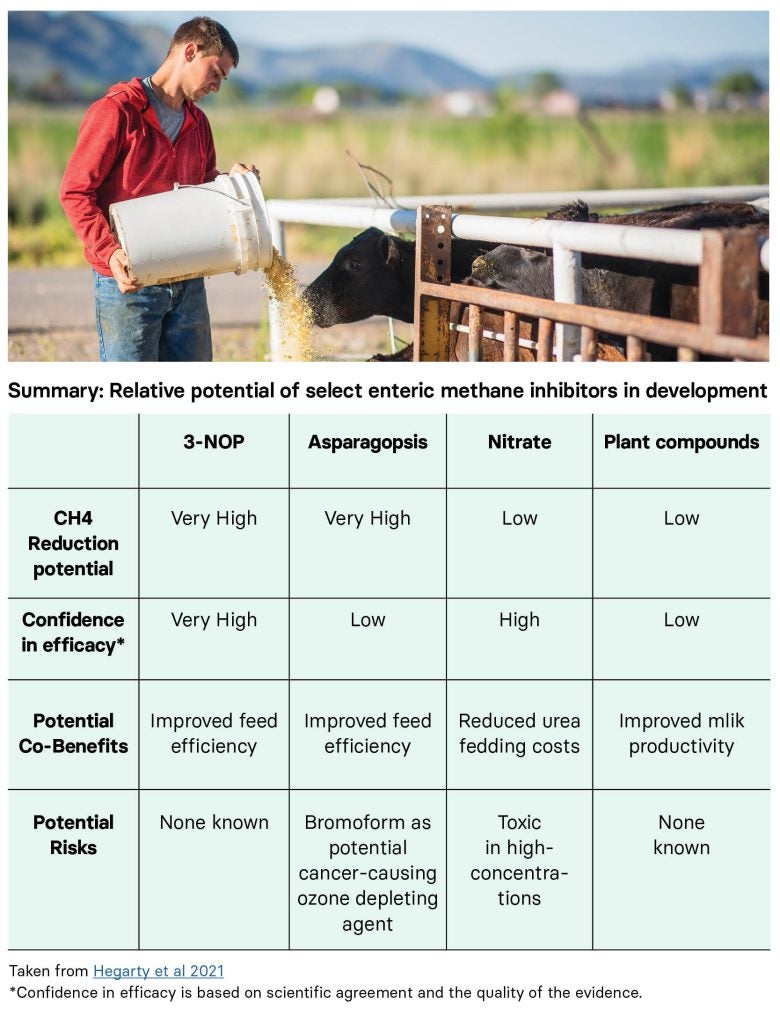Demystifying the enteric solutions market for food and agriculture companies
Enteric methane is emitted when ruminants, like cows, digest their food. These emissions are the single largest source of agricultural methane emissions, which makes reducing enteric emissions a massive opportunity to slow warming, today.
New breakthrough technologies coming to market are giving companies across the food and agricultural supply chain the ability to partner with farmers to reduce methane emissions while maintaining productivity. We’ve analyzed the various technologies and solutions for reducing enteric methane and provided an easy-to-follow strategy for implementing solutions now and overtime.

ACT NOW
Four-part strategy for companies to advance enteric methane reductions
- Be bold and set an ambitious goal. Setting a target sends a strong demand signal for methane-reduction tools. Follow the commitment with concrete implementation plans.
- Show why solutions are a priority for your company. Set aside a budget for methane reducing technologies as you allocate resources toward your climate strategies.
- Put solutions to the test. Piloting technologies can help demonstrate positive outcomes, share lessons learned and streamline adoption by the broader industry.
- Keep things moving by investing in R&D. More technologies for reducing enteric emissions are needed, and investments can help address critical research gaps.

SOLUTIONS PIPELINE
The science is evolving, and you don’t want to fall behind on the latest innovations. Here are the solutions to keep your eye on now and in the future.
- Feed additives are the most common method for achieving enteric emission reduction and are coming to market for confined livestock systems.
- 3-NOP is poised to be the first highly effective feed additive that is widely available.
- Other feed additives, including Asparagopsis, Nitrate and plant compounds, have also shown early promise.
- For livestock systems that rely on grazing, enteric solutions are at an earlier stage, but there is exciting research ongoing.

Stay connected to best-available science on new technologies and tools. We can help. Contact: kanderson@edf.org